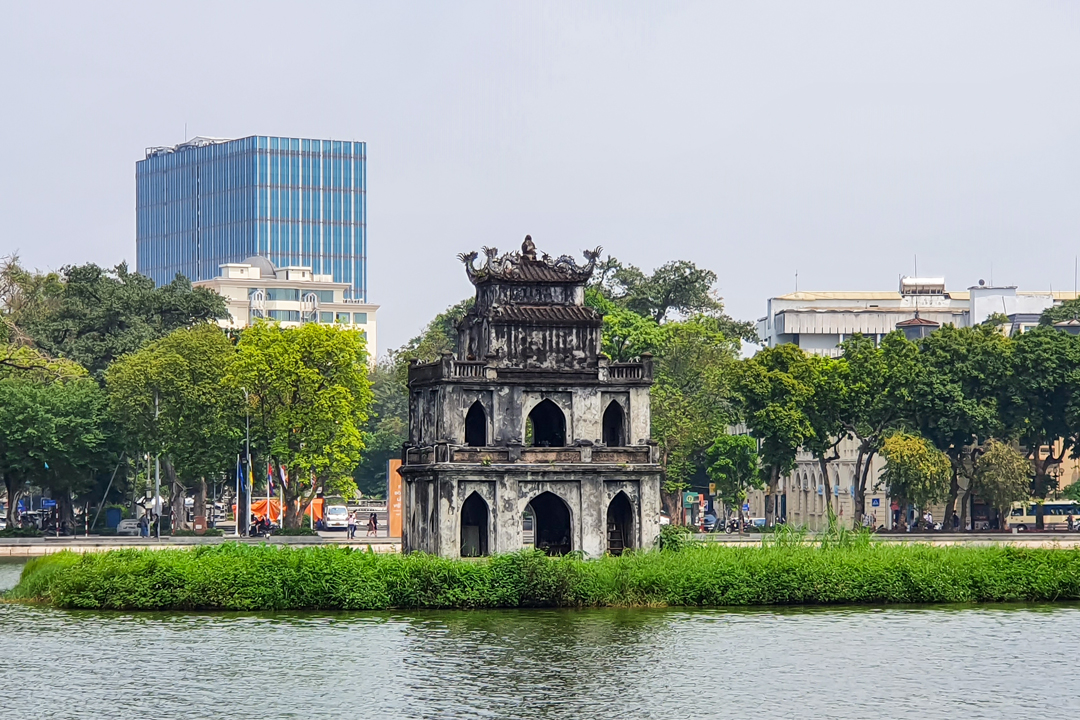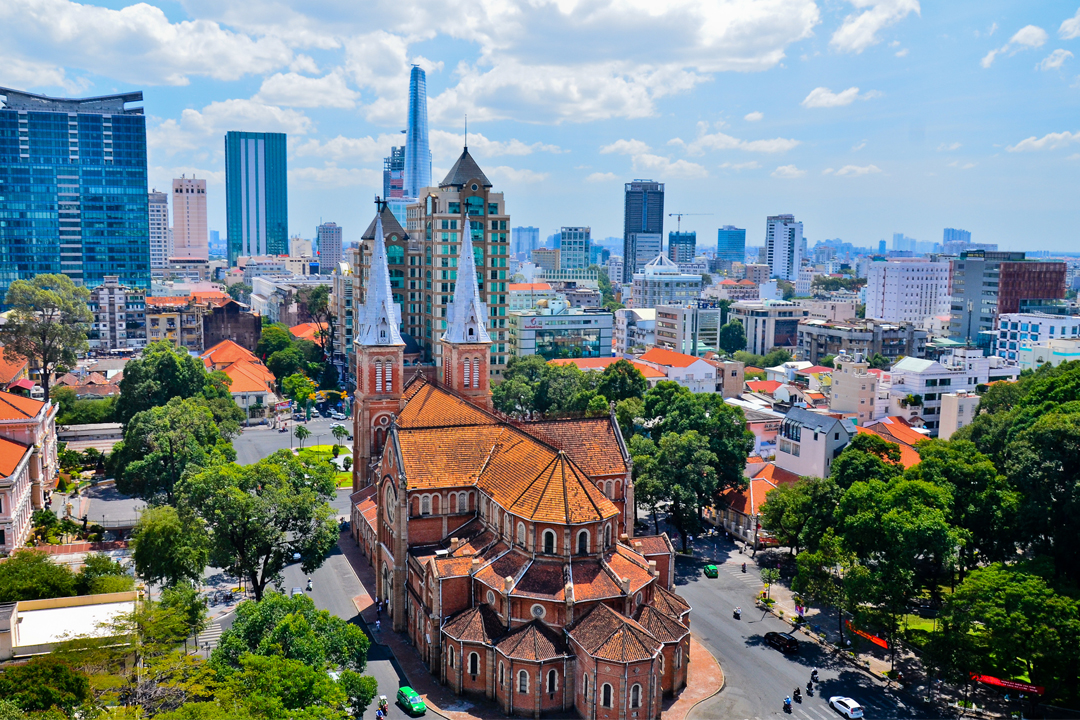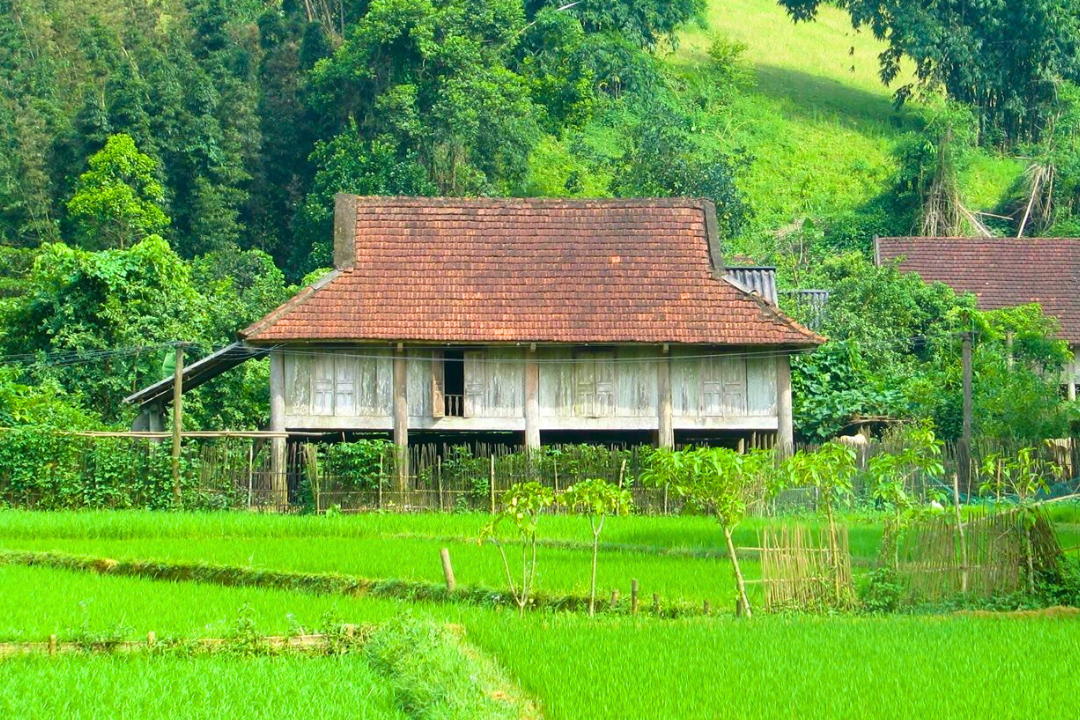May - 27 - 2025
Van Phuc Silk Village, also know Ha Dong Silk Village, is a vibrant testament to Vietnam's rich textile heritage. This enchanting destination appeals to those eager to delve into centuries-old traditions of silk weaving while discovering the enduring stories behind this treasured craft. As you explore the village, you’ll admire the skilled craftsmanship passed down through generations. For travelers and culture lovers, Van Phuc offers a chance to admire silk artistry while supporting ethical, sustainable fashion. The article will explore how this remarkable village continues to thrive amidst modernity. It also highlights its unique attractions and explains why it’s a must-visit on any traveler’s itinerary.
Where is Van Phuc Silk Village? What's special?
Van Phuc Silk Village lies along the Nhue River, about 10km southwest of central Hanoi in Ha Dong District. Known as Vietnam’s oldest and most prestigious silk weaving village, it boasts over a thousand years of continuous craftsmanship.
The village retains its traditional northern Vietnamese layout, with narrow streets, old-style tube houses, and shady banyan trees that reflect centuries of history. Around 90% of the 1,280 households remain involved in silk production, using time-honored techniques like jacquard looms to craft intricate, three-dimensional brocade patterns.
Van Phuc silk is famous for its four qualities: soft texture, lightweight feel, elegant sheen, and long-lasting durability. You can watch the full silk-making process in open workshops and shop for everything from classic garments to modern fashion accessories, home décor, and custom designs.
Despite modern influences, Van Phuc continues to thrive by blending tradition with innovation. It has become a cultural tourism hub, offering attractions like umbrella roads, mural streets, and hands-on weaving experiences. Events like the annual “Culture and Tourism Week” highlight both craftsmanship and contemporary fashion, reinforcing Van Phuc’s status as a living cultural treasure.
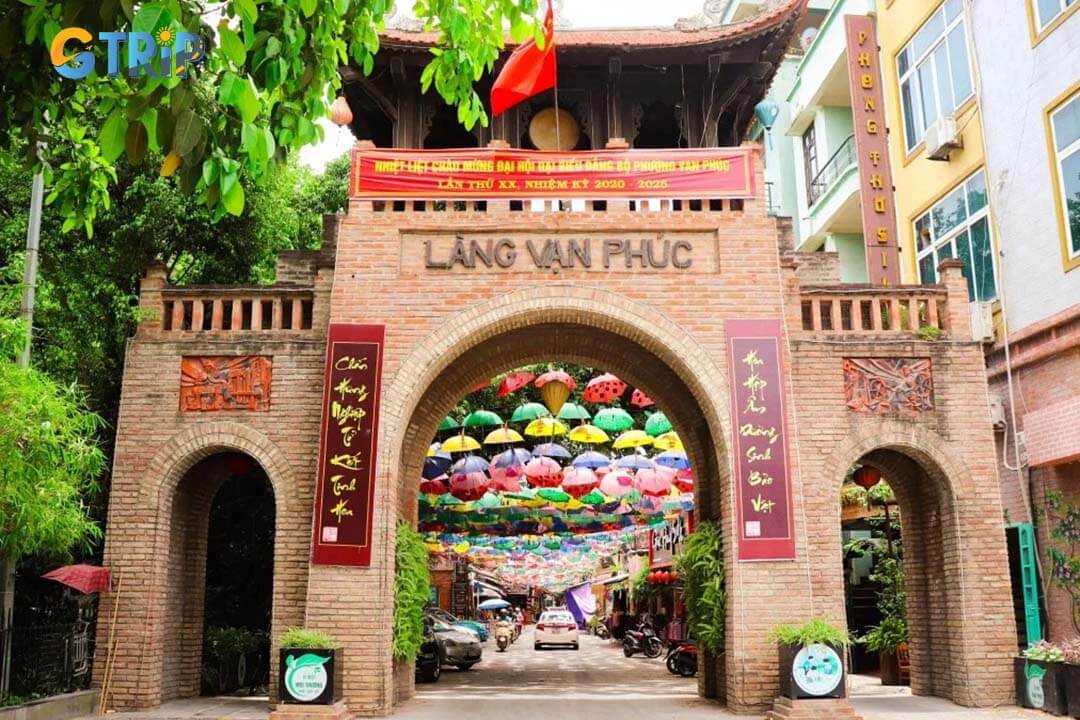
Van Phuc Silk Village is Vietnam’s oldest silk village where centuries-old weaving traditions meet modern design and cultural tourism
The history of Van Phuc Silk Village
Located on the outskirts of Hanoi, Van Phuc Silk Village has upheld its silk-weaving heritage for over 1,200 years. Passed down through generations, this craft continues to reflect Vietnam’s cultural depth while adapting to modern times.
Legend traces the village's origins to the 9th century when A La introduced advanced silk-making techniques from China. Van Phuc silk later became a tribute item to Vietnam’s imperial court, prized for its quality and royal designs like clouds, dragons, and phoenixes.
The village gained global recognition at the 1931 Marseille and 1938 Paris Fairs, where French experts praised it as the finest silk in Indochina. From 1958 to 1986, it operated under a state-run cooperative system before returning to family-run businesses post-Đổi Mới, sparking renewed innovation in designs and products.
In 2023, Van Phuc silk was officially recognized as a national intangible cultural heritage. Now part of Vietnam's OCOP program, the village continues to preserve its legacy while reaching new markets, blending ancient tradition with modern creativity.
Things to do at Van Phuc Silk Village
Van Phuc Silk Village offers a rich cultural experience where visitors can immerse themselves in Vietnam's silk heritage. Traditional craft demonstrations and shopping for authentic goods, the village provides numerous activities that showcase the essence of Vietnamese silk-making tradition.
Explore the iconic umbrella road
The umbrella road is undoubtedly one of the most enchanting attractions at Van Phuc Silk Village. This picturesque pathway features dozens of colorful silk umbrellas suspended overhead, creating a vibrant canopy that dances with every gentle breeze.
The umbrellas showcase various traditional Vietnamese designs and patterns, each handcrafted with meticulous attention to detail. As you stroll beneath this kaleidoscope of colors, you'll notice how the sunlight filters through the silk, casting beautiful patterns on the ground below. This experience highlights the elegance of Vietnamese silk and offers great photo opportunities for memorable moments.
Many travelers prefer visiting in the early morning or late afternoon, when lighting conditions are ideal. During these times, the umbrella road becomes a magical setting, with vibrant silk colors and a serene atmosphere.
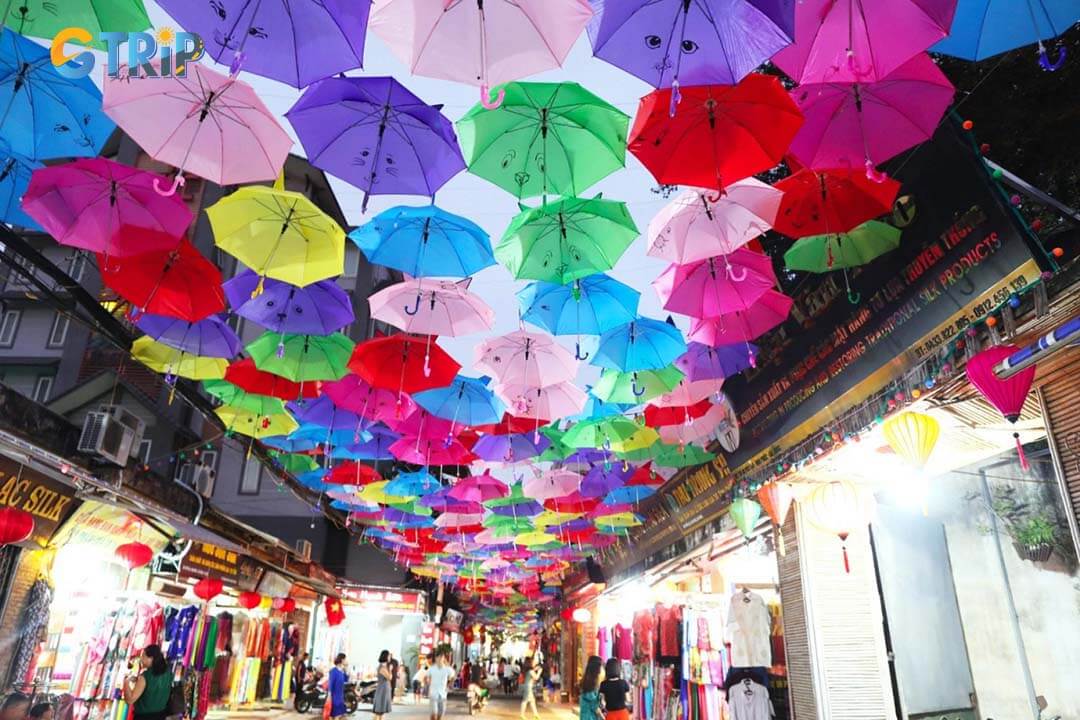
The umbrella road at Van Phuc Silk Village is a vibrant, photo-worthy walkway where colorful silk canopies showcase traditional designs
Walking through the mural street
The mural street of Van Phuc offers a visual journey through the village's rich history and cultural heritage. This artfully decorated pathway features hand-painted murals depicting the centuries-old story of silk production in the region.
As you wander down this colorful lane, you'll encounter vivid illustrations showcasing:
- Ancient silk traders and weavers at work
- Historical scenes of Van Phuc's development as a silk center
- Traditional Vietnamese cultural motifs and symbols
- Depictions of the mulberry cultivation and silkworm raising process
- Artistic representations of famous silk patterns and designs
Each mural serves as a window into different aspects of Van Phuc's identity, combining artistic expression with educational value. The street becomes an open-air gallery, where visitors enjoy the village’s story through murals crafted by talented local artists.
Learn about the silk weaving process
The silk weaving process at Van Phuc follows ancient techniques passed down through generations, providing visitors with a fascinating glimpse into this meticulous craft. Many workshops offer demonstrations where you can observe each stage of transformation from cocoon to luxurious fabric.
The traditional silk-making process follows these essential steps:
- Silkworm cultivation: Farmers raise silkworms on mulberry leaves until they spin cocoons
- Cocoon harvesting: Once silkworms complete their cocoons, they're harvested before the moths emerge
- Boiling of cocoons: Cocoons are boiled to loosen the silk filaments and remove the natural gum (sericin)
- Thread extraction: Workers carefully unwind the continuous filament from each cocoon
- Thread reeling: Multiple filaments are combined to create stronger threads
- Dyeing: Natural or synthetic dyes are used to color the threads
- Warping: Threads are arranged lengthwise on the loom
- Weaving: Skilled artisans work on traditional wooden looms to create intricate patterns
You can observe skilled craftspeople performing these techniques and sometimes even try their hand at simple weaving. The demonstrations frequently include explanations about how different patterns are achieved and the significance of various traditional designs in Vietnamese culture.
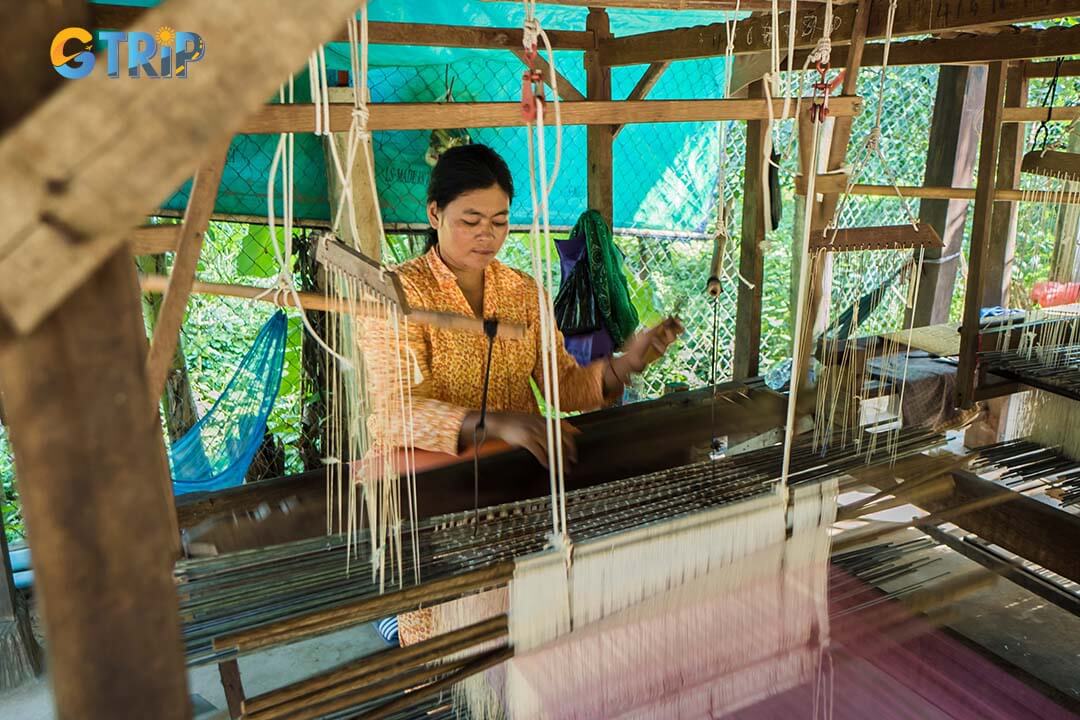
Watch traditional silk weaving come to life in Van Phuc, where age-old techniques transform cocoons into luxurious fabrics through hands-on demonstrations
Discover cultural exhibitions and silk collections
The cultural exhibitions at Van Phuc Silk Village offer a comprehensive look at both historical and contemporary silk craftsmanship. These well-curated displays showcase the evolution of Vietnamese silk production and its significant cultural importance throughout the centuries.
Within the exhibition spaces, you can explore:
- Ancient silk artifacts dating back several hundred years
- Royal garments and ceremonial robes crafted from Van Phuc silk
- Traditional tools and equipment used in different eras of production
- Interactive displays demonstrating pattern development techniques
- Contemporary collections from modern Vietnamese designers
- Comparative exhibits showcasing regional variations in silk weaving
The Van Phuc Silk Museum houses particularly notable collections, including rare examples of intricate designs once created exclusively for Vietnam's imperial court. Educational panels explain how silk production shaped Vietnam’s society, economy, and global trade over time.
Guided tours are available in multiple languages, offering deeper insights into the context and significance of the displayed items. Many exhibits also feature video presentations showing how traditional techniques have been preserved while adapting to modern demands.
Shopping for authentic silk products
Van Phuc Silk Village offers a treasure trove of authentic silk products that make for meaningful souvenirs and gifts. With dozens of family-run shops and boutiques lining the village streets, visitors can find everything from affordable accessories to luxurious bespoke garments.
Popular silk products available for purchase include:
| Product category | Available items | Price range |
|---|---|---|
| Clothing | Ao dai (traditional dress), shirts, scarves, ties | $15-200 |
| Home decor | Cushion covers, tablecloths, wall hangings, bedspreads | $10-150 |
| Accessories | Handbags, wallets, jewelry pouches, hair accessories | $5-50 |
| Art pieces | Embroidered paintings, framed silk work | $20-300 |
| Fabric | Raw silk by the meter in various weights and finishes | $8-30 per meter |
When shopping for authentic silk, look for natural irregularities in the weave and the distinctive feel. Genuine silk has a cool touch initially but warms quickly. Many shops offer the "burn test", where genuine silk smells like burning hair and turns to ash, while synthetic alternatives melt.
Most establishments welcome bargaining, though prices at more upscale boutiques are typically fixed. Many vendors can arrange international shipping for larger purchases, and some shops offer custom tailoring services where they can create bespoke garments within 24 - 48 hours.
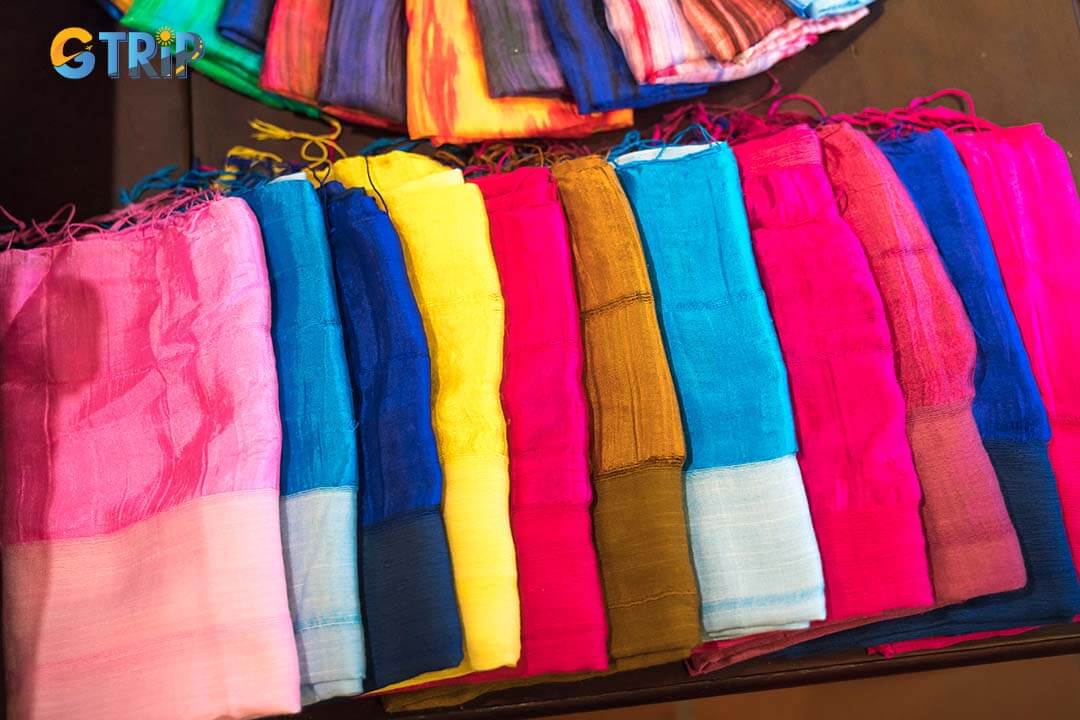
Van Phuc Silk Village is a shopper’s haven, offering a wide range of authentic silk products, crafted by local artisans using traditional techniques
Capture beautiful photos at Van Phuc Silk Village
Van Phuc Silk Village is a photographer's paradise with numerous picturesque spots that showcase traditional Vietnamese architecture, vibrant colors, and cultural heritage. If you're a professional photographer or simply capturing memories on your smartphone, these locations offer stunning backdrops.
The most photogenic spots include:
- The gate of Van Phuc Silk Village: This impressive traditional entrance features ornate woodwork and welcomes visitors with its imposing presence. The intricate details and classic Vietnamese architectural elements make it perfect for establishing shots.
- Umbrella road: Capture the magical play of light filtering through colorful silk umbrellas suspended overhead. This spot is particularly stunning in the golden hours of early morning or late afternoon when sunlight creates a kaleidoscopic effect.
- Mural street: The vibrant, storytelling murals provide colorful backgrounds for portraits and cultural photography. Each mural offers different compositions and color palettes to work with.
- Silk road: This main thoroughfare + lined with traditional silk shops, features artisans at work and displays of colorful textiles. The hanging fabrics create brilliant color compositions against the traditional architecture.
- Wooden bridge: The rustic wooden bridge spanning a small stream offers both scenic views and a charming subject itself. The weathered wood against lush greenery creates a tranquil composition reminiscent of traditional Vietnamese countryside.
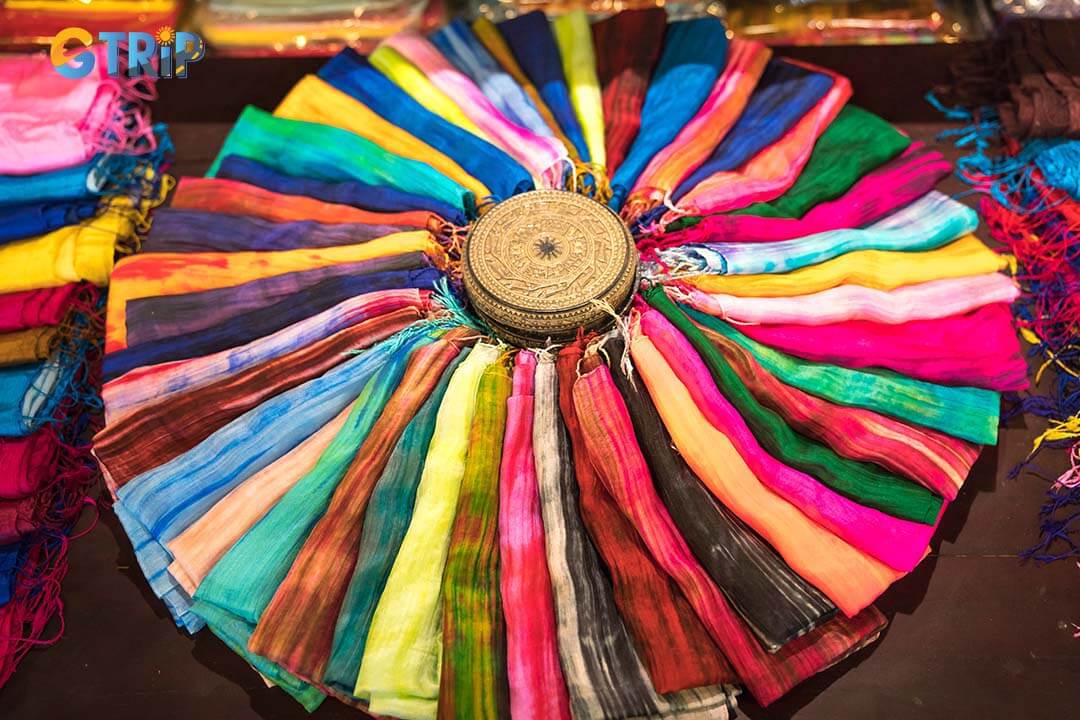
Van Phuc Silk Village is a dream for photographers, offering vibrant umbrellas, mural streets, and traditional architecture that create stunning backdrops for every shot
For the best photography experience, consider visiting during weekday mornings when the village is less crowded, allowing for unobstructed shots. The changing light throughout the day transforms each location, making repeated visits to the same spots worthwhile for varied results.
Opening hours & entrance fees of Van Phuc Silk Village
Van Phuc Silk Village welcomes visitors seven days a week, making it an accessible destination for both planned excursions and spontaneous day trips from Hanoi. The village runs year-round, offering plenty of chances to see silk-making in action and explore its many shops.
Operating hours
Van Phuc Silk Village maintains regular business hours that cater to tourists:
- Daily operation: Open 7 days a week, including weekends and most holidays
- Opening time: 8:00 AM
- Closing time: 5:00 PM
- Best visiting hours: Morning (8:00 AM - 11:00 AM) for silk production demonstrations
- Afternoon browsing: 1:00 PM - 4:00 PM for a relaxed shopping experience
- Workshop demonstrations: Most active between 9:00 AM - 3:00 PM
Most silk workshops and retail stores within the village follow these standard hours, though some family-owned shops may occasionally close during lunch hours. It's worth noting that during major Vietnamese holidays like Tet (Lunar New Year), some establishments might adjust their hours or close temporarily.
Entrance cost and pricing
One of the most appealing aspects of visiting Van Phuc Silk Village is its accessibility:
- Village entrance: Free of charge
- Silk workshops: No admission fee for observation
- Weaving demonstrations: Complimentary (tips appreciated but not required)
- Photography: Permitted without additional cost
- Guided tours: Optional, ranging from 150,000-300,000 VND (approximately $6-12)
The absence of an entrance fee makes Van Phuc an excellent budget-friendly cultural destination. Exploring the village is free, but visitors may want to budget for silk purchases, which vary in price by quality and design.
| Item type | Approximate price range (VND) | USD equivalent |
|---|---|---|
| Silk scarves | 150,000 - 500,000 | $6 - $20 |
| Silk ties | 200,000 - 400,000 | $8 - $16 |
| Silk ao dai fabric | 800,000 - 3,000,000 | $32 - $120 |
| Silk decorative items | 100,000 - 1,000,000 | $4 - $40 |
Best time to visit Van Phuc Silk Village
The ideal timing of your visit to Van Phuc Silk Village can significantly enhance your experience at this traditional craft village. Weather conditions, seasonal events, and crowd levels all play important roles in determining when to plan your silk village adventure.
Seasonal recommendations
The period from late Winter to early Spring (December to March) offers the most pleasant weather conditions for exploring Van Phuc Silk Village. During these months, northern Vietnam's mild weather and low humidity make it ideal for exploring village lanes and silk workshops. The cooler air enhances the shopping experience, letting you browse silk products comfortably without the heat or humidity.
Another excellent time to visit is during the dry season (October to April), when rainfall is minimal. This ensures you can easily navigate the narrow streets of the village and spend time observing artisans at work without weather interruptions.
Cultural events calendar
The highlight of Van Phuc's annual calendar is undoubtedly the Van Phuc Cultural Week, typically held in November. This event transforms the village into a vibrant celebration of silk craftsmanship and cultural heritage:
- Special exhibitions showcasing the finest silk products from local artisans
- Live demonstrations of traditional silk weaving techniques
- Cultural performances highlighting local music and dance traditions
- Silk fashion shows featuring both traditional and contemporary designs
- Interactive workshops where visitors can learn basic silk weaving skills
During this cultural celebration, the village is adorned with decorations that honor its silk-making legacy. These vibrant elements create exceptional photo opportunities and a festive atmosphere throughout the community.

Van Phuc Cultural Week is the village’s biggest annual event, celebrating silk heritage with exhibitions, fashion shows, performances, and hands-on weaving activities
Time of day considerations
| Time of day | Advantages | Considerations |
|---|---|---|
| Morning (8-11 AM) | • Best natural lighting for photography • Workshops are active and visible • Cooler temperatures | Less crowded before tour groups arrive |
| Afternoon (1-4 PM) | • Full selection of shops open • Good for shopping | Can be busier with tour groups |
| Late afternoon (4-6 PM) | • Beautiful golden hour lighting • Reduced crowds | Some workshops may begin closing |
For photography enthusiasts, morning visits provide optimal natural lighting that showcases the vibrant colors and delicate textures of silk products. The soft morning light also creates atmospheric scenes of artisans working at their looms, offering authentic glimpses into village life.
Crowd management tips
- Weekdays (Monday-Friday) generally see fewer visitors compared to weekends
- Early mornings (before 10 AM) offer the most peaceful experience
- Avoid Vietnamese public holidays when domestic tourism peaks
- Visit during regular weeks in November rather than directly during Cultural Week if you prefer a less crowded experience, but still want to see special decorations
How to get to Van Phuc Silk Village?
Located just 10km southwest of Hanoi's city center, Van Phuc Silk Village is easily accessible via multiple transportation options. If you prefer public transport, the freedom of a motorbike, or the convenience of a taxi, here's everything you need to know about reaching this historic silk-making destination.
By bus
Taking the bus to Van Phuc Silk Village offers the most economical option for travelers on a budget while providing an authentic local experience.
Bus routes to Van Phuc:
- Bus 01: Runs from Long Bien Station to Ha Dong (get off at Van Phuc stop)
- Bus 02: From Hanoi Opera House to Ha Dong
- Bus 105: From My Dinh Station to Van Phuc
The journey typically takes 40-50 minutes from central Hanoi, depending on traffic conditions. Buses run frequently from 5:00 AM to 9:00 PM daily.
Cost:
| Fare type | Price (VND) | Price (USD) |
|---|---|---|
| Single journey | 7,000-10,000 VND | $0.30-0.45 |
| Day pass | 30,000 VND | $1.30 |
Remember to have small bills ready, as drivers rarely provide change for large denominations. Buses can get crowded during rush hours (7:30-8:30 AM and 5:00-6:30 PM), so plan accordingly.
By motorbike
Renting a motorbike provides flexibility and independence for exploring Van Phuc Silk Village and its surroundings at your own pace. The route from central Hanoi is straightforward via Truong Chinh Street and Nguyen Trai Street toward Ha Dong district.
For navigation, use Google Maps or Maps.me (with offline functionality) to follow directions to "Lang Lua Van Phuc" or "Van Phuc Silk Village". The journey typically takes 25-35 minutes, depending on traffic conditions. Parking at the village is available for a nominal fee of 5,000-10,000 VND ($0.20-0.45). Be sure to bring your international driving license and wear a helmet (required by law).
By taxi or ride-hailing services
For maximum comfort and convenience, especially during hot summer days or the rainy season, taxis and ride-hailing services offer direct transportation to Van Phuc Silk Village.
Popular ride-hailing apps in Vietnam include:
- Grab (most widely used)
- Be
- Xanh SM
- Mai Linh Taxi (traditional taxi company with app)
The journey takes approximately 25-40 minutes from central Hanoi, depending on traffic conditions. Ride-hailing services typically offer more competitive rates than traditional taxis.

Traveling by taxi or ride-hailing app like Grab or Be offers a quick and comfortable 25 - 40 minute ride to Van Phuc from central Hanoi
Travel tips when visiting Van Phuc Silk Village
Exploring Van Phuc Silk Village offers a glimpse into Vietnam's rich textile heritage, but knowing how to navigate this cultural gem ensures a more rewarding experience. These practical tips will help you make the most of your visit while respecting local customs and maximizing your time in this traditional craft village.
- Dress comfortably and modestly: Light, breathable clothing is ideal as workshops can get warm, while modest attire shows respect for the traditional values of local artisans.
- Visit on weekday mornings: Arriving between 8-10 AM on weekdays provides the best opportunity to observe silk production in action when craftspeople are most active.
- Bring cash in small denominations: Most small shops and vendors don't accept credit cards, and having smaller bills makes negotiations easier and ensures you can purchase from any seller.
- Learn basic Vietnamese phrases: Mastering simple greetings like "xin chao" (hello) and "cam on" (thank you) will greatly enhance your interactions with local silk makers.
- Allow at least 3-4 hours for your visit: The village deserves unhurried exploration to fully appreciate the craftsmanship, history, and shopping opportunities available.
- Negotiate politely but firmly: Expect to bargain for silk items, starting at 70% of the initial asking price, but maintain a friendly demeanor throughout negotiations.
- Bring a lightweight bag for purchases: Many visitors can't resist buying silk souvenirs, and having a foldable bag prevents awkward carrying situations.
- Wear minimal jewellery when shopping: Elaborate accessories might suggest greater spending power, potentially resulting in higher initial price quotes.
- Take business cards from favorite shops: Many artisans offer shipping services if you want to order additional items after returning home.
- Check fabric authenticity: Genuine silk burns with a smell like burning hair and turns to ash rather than melting, request burn tests when making significant purchases.
- Visit the community house first: Starting at the village's cultural center provides historical context that enriches your subsequent interactions with artisans.
- Respect photography etiquette: Always ask permission before photographing craftspeople or their workshops, as some production techniques may be proprietary.
Nearby attractions from Van Phuc Silk Village
While visiting Van Phuc Silk Village, take time to explore the culturally rich attractions nearby. Nearby, you'll find a lively secondhand market, a spiritual pagoda, and an ancient temple reflecting Vietnam's religious heritage.
Van Phuc Pagoda
Van Phuc Pagoda stands as a tranquil spiritual sanctuary just a short walk from the bustle of the silk village. This Buddhist temple showcases traditional Vietnamese architectural elements with its curved roof tiles, ornate wood carvings, and peaceful courtyard.
Dating back several centuries, the pagoda has been renovated multiple times while maintaining its cultural significance. Inside, visitors will find meticulously crafted Buddha statues, intricate altars, and burning incense that creates a mystical atmosphere. The walls feature paintings depicting Buddhist stories and teachings that provide insight into local religious practices.
The pagoda is still actively used by local worshippers, especially during important Buddhist holidays and lunar calendar celebrations. You should be respectful by dressing modestly and speaking quietly while exploring the grounds.
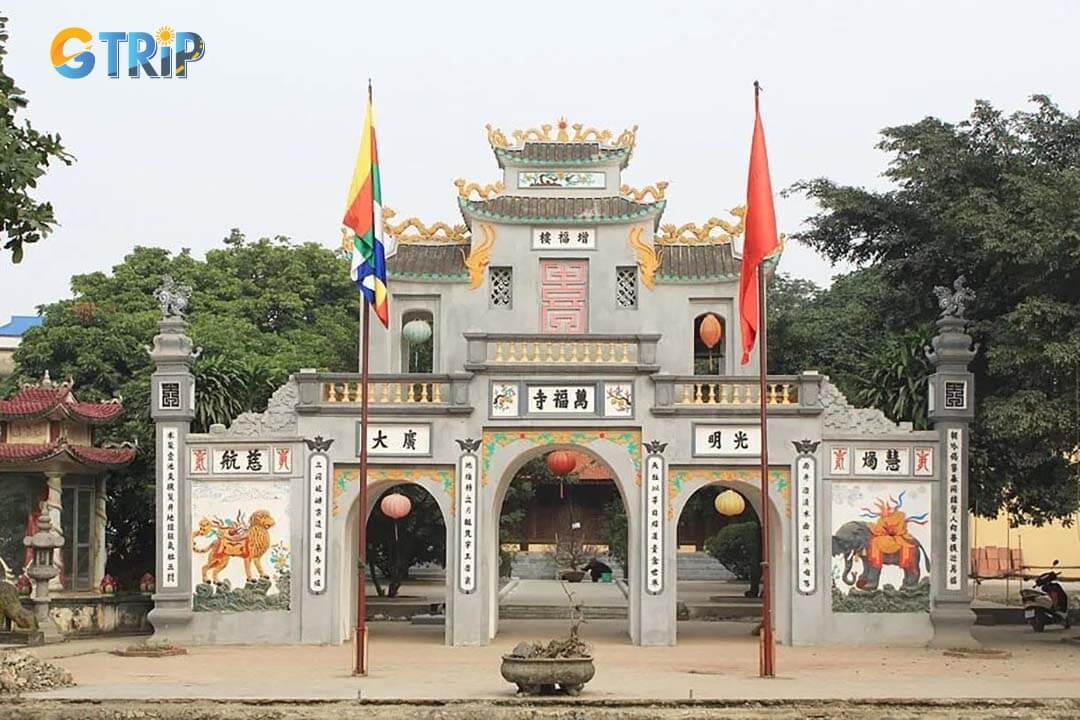
Van Phuc Pagoda is a peaceful centuries-old temple near the silk village, known for its traditional architecture, serene courtyard, and spiritual atmosphere
Van Phuc Secondhand Market
Located at 7 Kim Dong, Van Phuc, Ha Dong, Hanoi, the Van Phuc Secondhand Market offers a fascinating contrast to the refined silk products of the village. This vibrant marketplace has become increasingly popular with both locals and tourists seeking authentic Vietnamese shopping experiences.
The market operates primarily in the early mornings and late afternoons, creating a bustling atmosphere where bargain hunters can find everything from vintage clothing and household items to antiques and collectibles. Unlike the more curated silk shops in the village, the secondhand market provides a raw, unfiltered glimpse into local commerce and everyday Vietnamese life.
For photography enthusiasts, the market offers incredible opportunities to capture authentic moments of daily Vietnamese life. The best time to visit is between 6-8 AM when vendors are setting up and the morning light creates a magical atmosphere.
Ngoi Temple
Ngoi Temple represents an important historical and cultural landmark in the area. The temple dates back to the 18th century and displays remarkable preservation of traditional Vietnamese religious architecture.
Ngoi Temple is dedicated to the worship of local deities and historical figures who played significant roles in the region's development. The main sanctuary houses elaborately carved altars and ceremonial objects that reflect the skilled craftsmanship of previous generations. During important festivals, particularly in the first and seventh lunar months, the temple buzzes with activity as locals gather to participate in traditional ceremonies.
Ngoi Temple is notable for its ancient stone steles that record historic events and honor top imperial exam scholars. These steles offer valuable insights into the educational system and societal values of Vietnam's past.

Ngoi Temple is a well-preserved 18th-century landmark known for its traditional architecture, ancestral worship rituals
As you reflect on the wonders of Van Phuc Silk Village, imagine the vibrant colors and intricate patterns that have transformed simple threads into rich tapestries of history. Your journey through this cultural gem has been a visual feast and an exploration of age-old traditions that continue to thrive today. This experience is more than just witnessing craftsmanship, it's about connecting with generations of artisans who pour their heart and soul into every piece.
By uncovering these stories, you gain a deeper appreciation for the artistry behind each exquisite fabric. Should your travels lead you here, let GTrip be your compass in discovering more hidden treasures like this one. As you dream about future adventures, consider how these experiences weave together a tapestry of memories that's uniquely yours.

